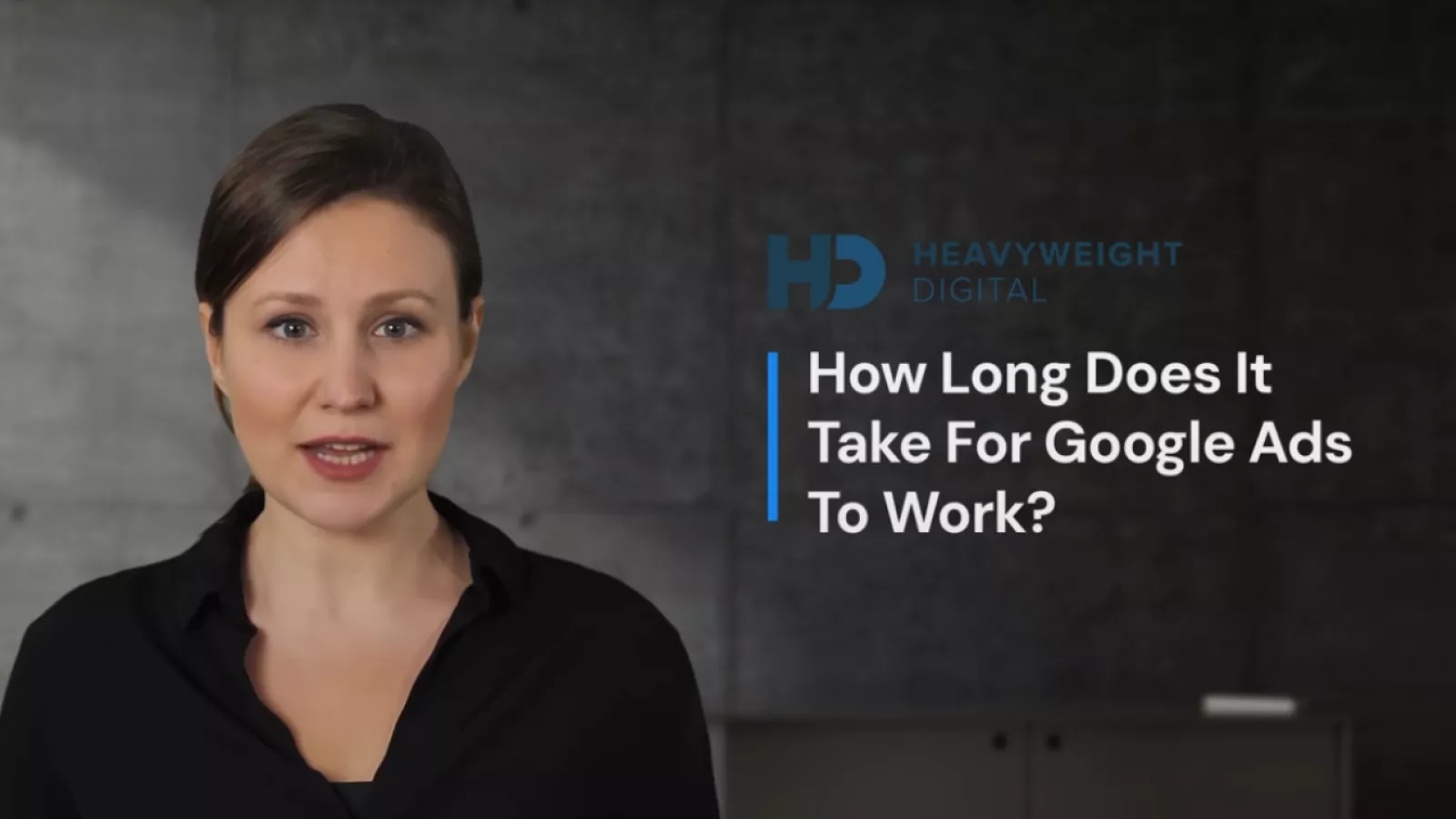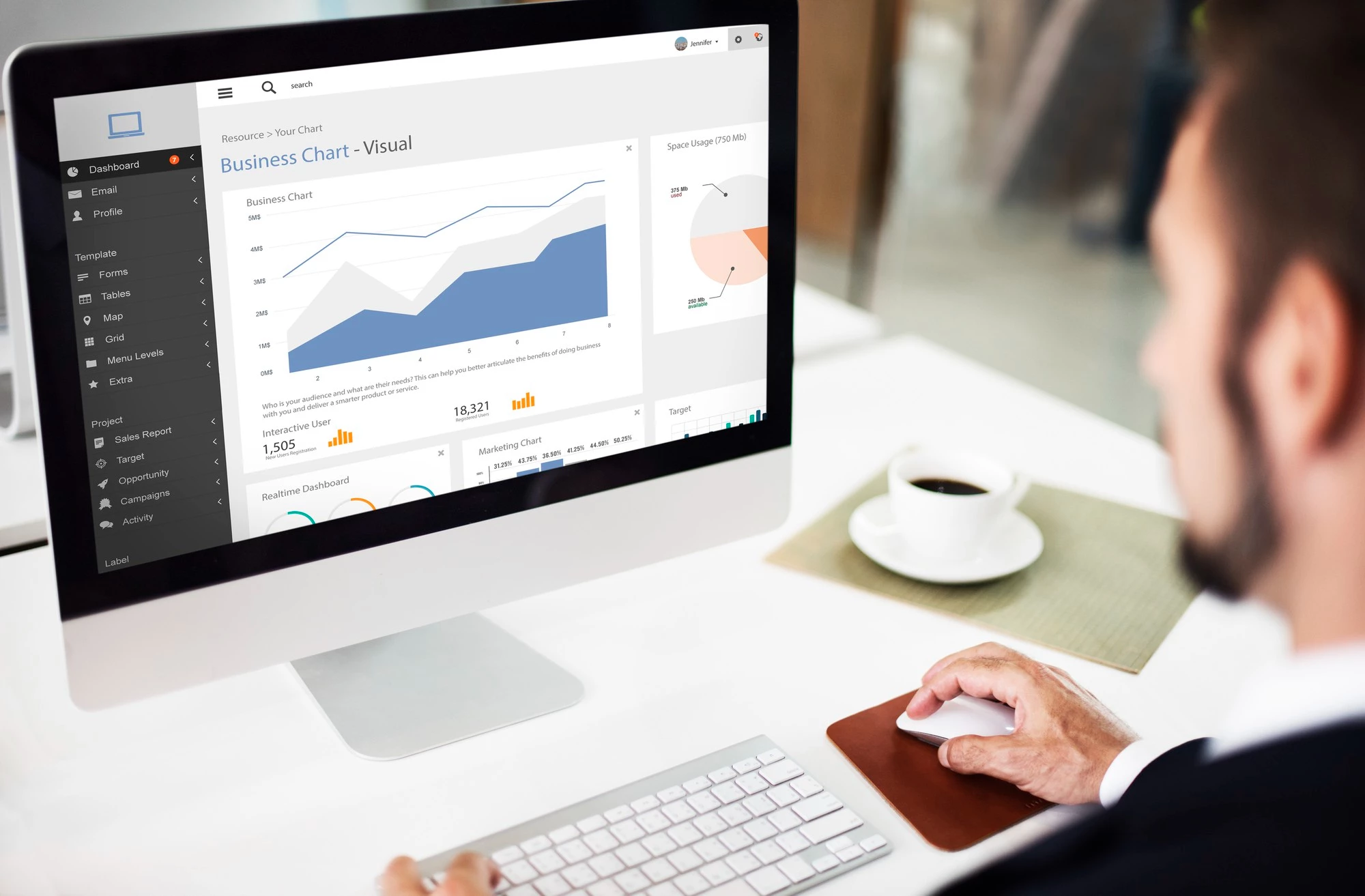
How Long Does It Take For Google Ads To Work?

by Lucy Greenaway
Setting Realistic Expectations With A New Google Ads Campaign
With it's pay per click auction-style platform and specific targeting options and wide reach, it's no wonder why Google Ads (formally known as Google Adwords many moons ago) is a go to for the vast majority of businesses across the globe.
But the burning question that a lot of businesses who are still relatively new to Google Ads is - How long does it take for Google Ads to work?
Patience is key in pay-per-click advertising, and understanding the nuances of the timeline is crucial for success.
The Immediate Impact of Google Ads Results
Google Ads, with its instant visibility on search engine results pages (SERPs), promises advertisers an immediate impact on their online presence.
However, understanding the nuances of the first few days of a Google Ads account and new Google Ads campaigns is crucial to harness its full potential.
In the early days, the ad is introduced to the target audience.
The immediate impact is akin to a grand opening, where the first impressions set the tone for user perception. Advertisers should closely monitor user interactions during this period to understand which elements of the ad are capturing attention.
Week 1: Campaign Setup
In the first week of launching a Google Ads campaign, the focus is on careful and detailed setup.
This involves defining campaign objectives, creating an ad group or more, selecting relevant keywords for your ad groups, crafting compelling ad copy, and bid strategy and establishing an initial budget. The groundwork laid in this crucial week forms the foundation for the entire ad campaign, setting the stage for subsequent data collection and analysis. If you're creating a new Google Ads account, it's worth considering if you are eligible for any Google Ads Vouchers to help with your as spend.
Week 2-4: Learning Phase Data Collection
As the campaign progresses into its second to fourth weeks, it enters a crucial learning phase.
During this period, the platform gathers valuable data on user behaviour, keyword performance, and ad engagement. Advertisers closely monitor these insights to understand what resonates with their audience, laying the groundwork for informed decision-making in the upcoming optimisation phase.
Months 2-3: Gaining Momentum As A Strong Campaign
Moving into the second and third months, the campaign should be gaining momentum.
This phase is characterised by a more refined and efficient strategy, with ongoing adjustments based on the data collected during the initial weeks. Advertisers focus on optimising keywords, improving ad relevance and audience targeting, and ensuring that the campaign aligns with overarching business goals, resulting in a more potent and impactful advertising effort.
Months 3-6: Mid-Term Adjustments
The period from the third to the sixth month marks the mid-term adjustments phase.
Advertisers assess the campaign's performance, identifying areas for enhancement and expansion. This involves scaling successful strategies, refining targeting parameters, and adapting to shifts in market dynamics. Mid-term adjustments are instrumental in solidifying the campaign's position and preparing it for sustained success.
Beyond 6 Months: Long-Term Success
Beyond the initial six months, the focus shifts from immediate optimisations to long-term success.
Advertisers concentrate on establishing a robust brand presence, fostering customer loyalty, and continuously refining their advertising approach. The campaign becomes an integral part of the overall marketing strategy, contributing consistently to brand visibility and sustained growth over an extended period.
Factors That Influence The Speed Of Google Ads Results
The speed at which Google Ads delivers results is subject to a myriad of influencing factors, each playing a crucial role in determining the effectiveness and efficiency of a campaign. Understanding these factors is paramount for advertisers seeking to optimise their strategies and achieve timely and impactful outcomes.
Allocated Budget
One of the primary influencers of Google Ads results is the allocated budget. A higher budget allows for more aggressive bidding, increasing the likelihood of ad placements and visibility. However, it's essential to strike a balance, ensuring that the budget aligns with campaign goals and effectively targets the desired audience.
Industry Competitiveness
The competitive landscape within a specific industry significantly affects the speed at which Google Ads yields results. In highly competitive sectors, advertisers may face challenges in standing out, requiring more time and strategic planning to gain traction. Conversely, less competitive industries may experience faster results as ads face less competition for visibility.
Ad Quality and Relevance
The quality and relevance of ads directly impact their performance. Google's algorithms prioritise ads that are deemed valuable and relevant to users. Crafting compelling ad copy, utilising high-quality visuals, and ensuring alignment with targeted keywords enhance ad quality, positively influencing the speed at which the campaign generates results.
Targeting Parameters
The precision with which advertisers define their target audience influences the efficiency of Google Ads. Accurate targeting ensures that ads reach users with a genuine interest in the product or service, increasing the likelihood of conversions. Advertisers who meticulously define and refine their targeting parameters can experience faster and more meaningful results.
Common Challenges In The Early Stages of Running Google Ads
Embarking on a Google Ads campaign is an exciting endeavour, but like any journey, it comes with its share of challenges, particularly in the early stages.
Recognising and addressing these hurdles is crucial for advertisers aiming to maximise the effectiveness of their campaigns.
Understanding User Intent
Deciphering user intent is fundamental to crafting effective ad content.
In the early stages, advertisers may face challenges in aligning their messaging with what users are actively searching for. Keyword research and close monitoring of search queries can provide insights into user intent, enabling advertisers to tailor their content more effectively.
Adapting to Algorithm Changes
Google's algorithms are dynamic and subject to frequent updates.
Advertisers in the early stages may find it challenging to keep pace with algorithm changes that can impact ad performance. Staying informed about industry trends, attending to Google Ads notifications, and promptly adjusting strategies are essential for adapting to algorithmic shifts.
Keyword Selection and Optimisation
Selecting the right keywords is fundamental to the success of your Google Ads campaign.
In the early stages, advertisers often grapple with identifying relevant keywords and negative keywords that align with their business objectives. Furthermore, optimising keyword bids and ad content for maximum relevance can be a learning curve, impacting the ad's visibility and overall performance.
Ad Copy Effectiveness
Crafting compelling ad copy that not only attracts clicks but also converts is an ongoing challenge.
Finding the right blend of creativity, relevance, and a clear call to action is crucial for driving engagement. Advertisers often need to experiment with different messaging and continually refine their ad copy based on performance metrics
Monitoring and Optimising

Monitoring and optimisation should be viewed as ongoing processes rather than one-time initiatives. Regularly revisiting and refining strategies based on changing requirements and updating conversion tracking with platforms like Google Analytics ensures that systems remain resilient and responsive to evolving business needs.
Common Misconceptions
Some businesses believe that once a Google Ads campaign is set up, minimal maintenance is required.
In reality, successful campaigns require ongoing monitoring and adjustment. Regularly analysing performance metrics, evaluating the effectiveness of keywords, and making data-driven optimisations contribute to sustained success.
Assuming that a substantial budget alone ensures success is a misconception.
While a reasonable budget is important, it's equally crucial to allocate funds strategically. Quality ad content, targeted keywords, and an understanding of the target audience are equally—if not more—important than the budget size.
A well-optimised campaign can often outperform a higher-budget one with less strategic planning.
A common misunderstanding is equating high click-through rates with automatic conversions. While clicks are an essential metric, they don't guarantee customer actions.
The quality of clicks matters just as much as the quantity. Focusing on relevant keywords and compelling ad copy is vital to attracting clicks that are more likely to convert into actual customers.
Why You Shouldn't Look In A Today View?

While the "Today" view in Google Ads provides a snapshot of recent campaign performance, relying solely on this immediate perspective can be a limiting approach.
Advertisers must recognise the potential pitfalls associated with fixating on the Today view and understand why a more comprehensive analysis is necessary for effective campaign management.
Limited Historical Context
The Today view, by its nature, offers a narrow timeframe—typically the current day.
This limited historical context can mask important trends and patterns that unfold over time. To gain a holistic understanding of campaign performance, advertisers need to delve into longer timeframes, identifying seasonality, cyclical trends, and the impact of recent optimisations.
Fluctuations and Daily Variability
Daily variations in ad performance are common and can be influenced by numerous factors, such as time of day, day of the week, or external events.
Relying solely on the Today view may lead to overreaction to short-term fluctuations, causing unnecessary adjustments. A more measured and strategic approach involves analysing trends over an extended period to discern meaningful patterns amidst daily noise.
Incomplete Picture of Conversions
For campaigns focused on driving specific actions, such as conversions, the Today view might provide an incomplete picture.
Conversion data may not fully manifest within a single day, especially for products or services with longer sales cycles. Examining performance across a broader timeframe allows advertisers to capture the entire customer journey, from initial interaction to conversion.
Overlooking Lagging Indicators
Certain campaign optimisations may take time to yield measurable results.
Overemphasising the Today view may lead to overlooking lagging indicators that reflect the impact of strategic changes. Advertisers should incorporate a longer-term perspective to assess the effectiveness of adjustments made to targeting, ad creatives, or bidding strategies.